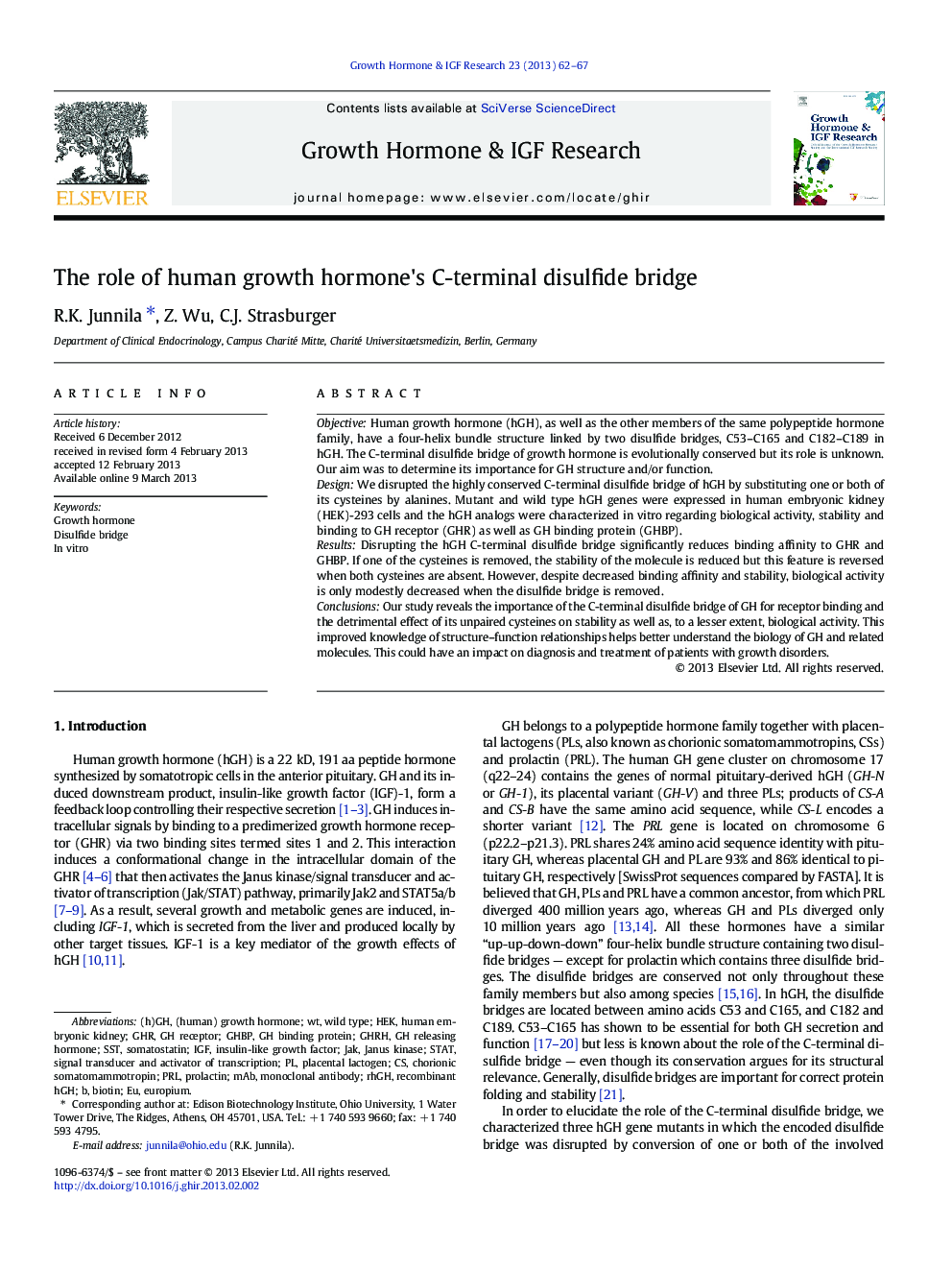| کد مقاله | کد نشریه | سال انتشار | مقاله انگلیسی | نسخه تمام متن |
|---|---|---|---|---|
| 2802650 | 1156700 | 2013 | 6 صفحه PDF | دانلود رایگان |

ObjectiveHuman growth hormone (hGH), as well as the other members of the same polypeptide hormone family, have a four-helix bundle structure linked by two disulfide bridges, C53–C165 and C182–C189 in hGH. The C-terminal disulfide bridge of growth hormone is evolutionally conserved but its role is unknown. Our aim was to determine its importance for GH structure and/or function.DesignWe disrupted the highly conserved C-terminal disulfide bridge of hGH by substituting one or both of its cysteines by alanines. Mutant and wild type hGH genes were expressed in human embryonic kidney (HEK)-293 cells and the hGH analogs were characterized in vitro regarding biological activity, stability and binding to GH receptor (GHR) as well as GH binding protein (GHBP).ResultsDisrupting the hGH C-terminal disulfide bridge significantly reduces binding affinity to GHR and GHBP. If one of the cysteines is removed, the stability of the molecule is reduced but this feature is reversed when both cysteines are absent. However, despite decreased binding affinity and stability, biological activity is only modestly decreased when the disulfide bridge is removed.ConclusionsOur study reveals the importance of the C-terminal disulfide bridge of GH for receptor binding and the detrimental effect of its unpaired cysteines on stability as well as, to a lesser extent, biological activity. This improved knowledge of structure–function relationships helps better understand the biology of GH and related molecules. This could have an impact on diagnosis and treatment of patients with growth disorders.
Journal: Growth Hormone & IGF Research - Volume 23, Issue 3, June 2013, Pages 62–67